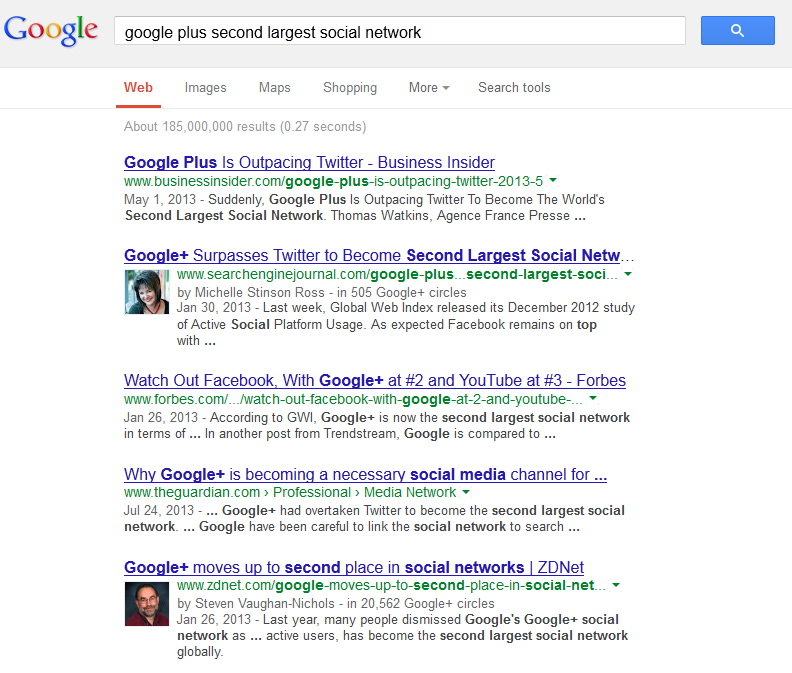Here’s a little background on what Google Authorship is:
Google was incorporated on September 4, 1998 and since September 5th of that year, marketers have been trying to be on top of the SERPs (search engine results page). Then Google+ launched on June 28, 2011. They launched for a variety of reasons, the biggest reason cited was to be a competitor against Facebook. This data also shows that Google+ passed Twitter as the second largest social media site. The reason most marketers care so much about Google+ is that it helps increase your search ranking. (There is a debate about whether it actually does help increase your search rankings, or not. Google has denied that claim – but feel free to read more about it at Ignite Social Media.)
The reason Google was created and continues to thrive is because people are creating content all of the time. This blog post is case and point that people everywhere have become content creators. Well, Google realized this and decided to tie individuals on Google+ with their blog posts. Hence, Google Authorship was born.

When thinking if Google Authorship is right for your website, there are several things to take into consideration.
First, some risks you should weigh:
- Google is known to misattribute Authorship. There are a variety of blog posts out there with examples of this.
- If you have multiple authors or an author (such as Dr. Seuss) that uses a pseudonym, Google Authorship does not support that option.
- The individual is promoted over your brand. Google is putting an individual’s picture next to blog content – they don’t want to put your brand logo or name; therefore, you have to be willing to promote your employees reputation over the brand.
The last point actually leads into my first point in why you should implement it for your brand.
- The individuals that make up your brand speak volumes for your brand. The personal brand recognition they receive from having their picture next to content helps build that reputation.
- Higher CTRs (click through rates) have been shown with content that has Google Authorship enabled (unless you are the first result and then people can think your content is paid; therefore, they skip it).
- The image next to content builds credibility. Your unknown audience has put a face with your content. This is fascinating that Google is experimenting with human relationships in algorithms.
- There are some other neat tricks that Google has set-up for Authorship. Such as being able to click on the author’s name and get a custom Google search for them, which highlights their credentials on the side.
As a brand, you need to make the decision on whether or not to implement Google Authorship and if it is part of your brand strategy. Just like all tactics, Google Authorship should be just one part of your overall strategy.























